Procedures, guidelines and reports
Guidelines for practitioners providing services within the Newborn Metabolic Screening Programme in New Zealand February 2010
These guidelines are for all practitioners involved in aspects of the Newborn Metabolic Screening Programme (NMSP), including Lead Maternity Carers (LMC's), hospital midwives, nurses and phlebotomists.
These guidelines are currently being reviewed and updated. Updated versions will be online early next year. The current guidelines are to be read in conjunction with the updates below.
Update December 2022
Changes
- The newborn blood spot samples should now be taken from 24 hours of baby’s age.
- The optimal time for newborn blood spot collection is between 24 and 48 hours of baby’s age and should be before 72 hours. This is a change from between 48 and 72 hours of baby’s age.
- It is recommended that blood spot samples be collected while babies are still in the hospital or birth facility if possible.
- The earlier collection will help ensure early diagnosis and can prevent irreversible damage and life-threatening illnesses cause by delay in access to treatment.
- Monitoring of the samples that have already been collected from 24 hours indicated that there is no impact on the quality of samples collected from at 24 hours. This will continue to be monitored.
Practice reminders
- Please ensure the date/time of sampling is recorded on all blood spot cards.
- Send each blood spot sample when collected and dried – don’t hold onto samples to send them in batches.
- Record the courier tracking number before blood spot sample cards are sent to the laboratory. Take a photo or note down the number from the courier bag and add this to the baby’s health care records.
- Expect to receive a result in 7–10 days of the sample being taken, if not, check that the laboratory has the sample using the courier tracking number and call 0800 LABLINK to enquire about the sample/result. Remember to let the parents/guardian know the results.
- Record the test result in the baby’s clinical notes.
- There is a great best practice e-learning module available at LearnOnline “Best Practice - Newborn Metabolic Blood Spot Collection”.
- Results are no longer being sent by fax, so please contact the laboratory ASAP to update your preferred contact details. Fill out the form on medialab.com and email to [email protected]
- There has been a change of card colour from buff to white. Keep using old buff cards until the old stock is used up. For the new cards, new information is required regarding the location where the sample was taken (community, birthing unit, home or hospital).
- Resources: lancets, cards and courier bags can be ordered, free of charge, via [email protected]
- NMSP information resources for both midwives and whanau are available to download here on the NSU website.
- When whānau/parents/guardians decline, if appropriate, please ask them if they agree to a blood spot card being filled out with their demographic information, for the purposes of monitoring participation in the programme. If they consent, fill the sample card in as much as possible including a note that screening was declined, and courier it to the laboratory.
An example of the importance of the timing of collection and transit
- Every day counts to making a difference for the baby in newborn screening. Here is one example of why delays in collecting and sending blood spot samples can have serious consequences:
- Congenital adrenal hyperplasia (CAH) is just one of the serious illnesses that can be detected by newborn screens. Babies with CAH who are detected through newborn screening in the first week of life usually have minimal symptoms - they might be starting to spill and have mild electrolyte disturbance but are otherwise well babies. The same disease picked up at 2–3 weeks old can look completely different, with babies that are extremely unwell. They can be dehydrated, well below their birth-weight, with little urine output and a very low or unmeasurable BP. The electrolyte disturbance (low sodium, high potassium) can be very severe and immediately life-threatening. Some babies with CAH that is picked up late will be so sick they need admission to ICU and might be left with life-long disability. Remember, every day counts in newborn screening.
Best Practice - Newborn Metabolic Blood Spot Collection learning module
The Best Practice - Newborn Metabolic Blood Spot Collection e-learning module is now available for midwives, and other health professionals, to update and refresh their knowledge and skills on newborn metabolic screening blood spot sample collection. To learn more see Procedures and practices.
In addition to this, the other Antenatal and Newborn Screening modules are also available on Learn Online:
- Screening Principles and Practice
- Quality Improvements in Antenatal Screening for Down syndrome and other conditions (QIASD)
- Universal Newborn Hearing Screening and Early Intervention Programme (UNHSEIP)
- Newborn Metabolic Screening Programme (NMSP).
Heel pricks – warming, pain relief and lancet use
This paper provides information on best practice for heel warming, pain relief, and lancet use.
Screening for Fatty Acid Oxidation Disorders in the Newborn Metabolic Screening Programme
This paper provides information about the addition of fatty acid oxidation disorders to the Newborn Metabolic Screening Programme in December 2006.
Newborn screening and diagnostic protocol for cystic fibrosis in New Zealand
This paper describes the newborn screening and diagnostic protocol for cystic fibrosis in New Zealand, and was finalised by the NMSP Technical Group in April 2016.
In this section
-
The Newborn Metabolic Screening Programme Policy Framework provides guidance for all programme providers within the screening programme.
-
Best Practice - Newborn Metabolic Blood Spot Collection learning module
-
The NSU and Ministry of Health recommend that all parents and caregivers are offered newborn metabolic screening for their baby.
-
Monitoring of screening programmes is required to ensure ongoing quality and an evidence base to service development.

